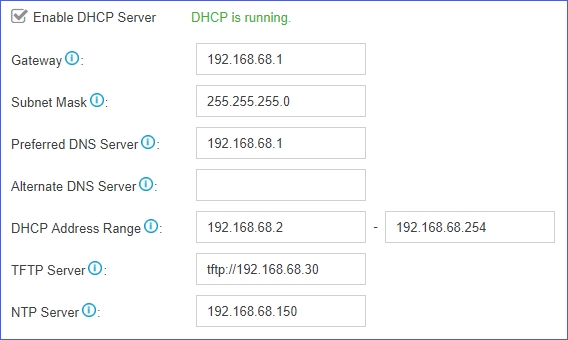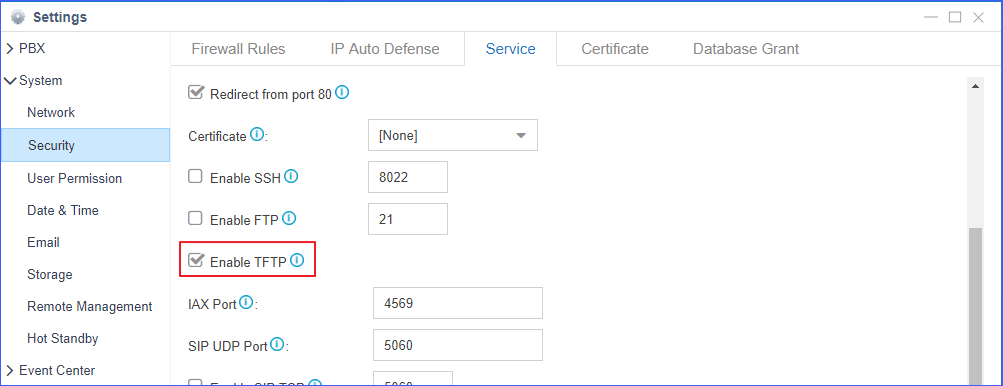Provision Cisco Phones with Yeastar S-Series VoIP PBX
This guide provides instructions on how to provision Cisco phones with Yeastar S-Series VoIP PBX. The details in this guide takes Cisco SPA502G running firmware 7.6.2c as an example.
Supported phone models
- SPA301, SPA303
- SPA501G, SPA502G, SPA504G, SPA508G, SPA509G, SPA512G, SPA514G, SPA525G2
Factory reset the phone
Before provisioning the phone, you must reset the phone to factory defaults in case the device has residual settings of a previous configuration. To reset the phone, see How to Factory Reset Cisco Phones.
Provision the phone via DHCP
- Disable DHCP function on your router.
Make sure that the PBX is the only DHCP server in your local network.
- Log in Yeastar S-Series VoIP PBX web interface, go to , check the option Enable DHCP Server.
- Configure the DHCP server, such as Gateway, Subnet Mask, DHCP Address
Range, etc.
Note that you should configure the PBX IP as the TFTP server address.

- Check the option TFTP, set the PBX as a TFTP
server.

- Click Save and Apply.
- Connect the phone to the same network of the Yeastar S-Series VoIP PBX.
- Check the phones' MAC address and phone model, usually you can find them at the back of phone.
- Log in Yeastar S-Series VoIP PBX web interface, go to Auto
Provisioning page, click Scan to
scan phones in the local network.
All the detected phones appear on the page.
- Find the phone from Device List, and then click
 .
. - Assign an extension for the phone.

- Click Save.
A pop-up dialog prompts you whether to reboot the phone immediately.
- Click Yes.
The IP phone reboots automatically to get and apply configurations from the PBX.
-
If the IP phone doesn't reboot automatically, you need to reboot the phone manually to take effect.
-
Each time the IP phone reboots, it always gets the configurations from the PBX. In this case, the personal settings on the phone may be lost after the phone reboots.
Cisco Provisioning options
In addition to provision phone lines, you can provision other phone settings to match your needs.
- Line Keys Settings
You can assign share line or private line to line keys.
- Features
Enable or disable the phone features, such as Voicemail, Auto Answer, Auto Redial, etc.
- Preference
Configure the phone preference settings, such as Time Format, Time Zone, Admin Password, etc.
- Codec
Select and configure the preferred codec list for the phone.
Note: At least one of the same codecs on the phone and the PBX is required, or there will be no audio in the call.